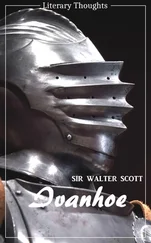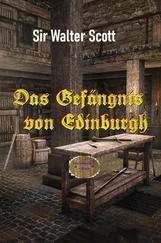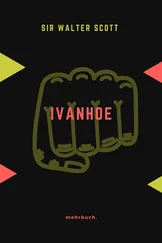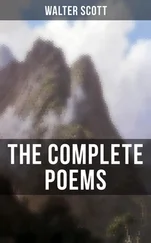Walter Scott - Ivanhoe
Здесь есть возможность читать онлайн «Walter Scott - Ivanhoe» — ознакомительный отрывок электронной книги совершенно бесплатно, а после прочтения отрывка купить полную версию. В некоторых случаях можно слушать аудио, скачать через торрент в формате fb2 и присутствует краткое содержание. Жанр: Исторические приключения, на английском языке. Описание произведения, (предисловие) а так же отзывы посетителей доступны на портале библиотеки ЛибКат.
- Название:Ivanhoe
- Автор:
- Жанр:
- Год:неизвестен
- ISBN:нет данных
- Рейтинг книги:4 / 5. Голосов: 1
-
Избранное:Добавить в избранное
- Отзывы:
-
Ваша оценка:
- 80
- 1
- 2
- 3
- 4
- 5
Ivanhoe: краткое содержание, описание и аннотация
Предлагаем к чтению аннотацию, описание, краткое содержание или предисловие (зависит от того, что написал сам автор книги «Ivanhoe»). Если вы не нашли необходимую информацию о книге — напишите в комментариях, мы постараемся отыскать её.
Ivanhoe — читать онлайн ознакомительный отрывок
Ниже представлен текст книги, разбитый по страницам. Система сохранения места последней прочитанной страницы, позволяет с удобством читать онлайн бесплатно книгу «Ivanhoe», без необходимости каждый раз заново искать на чём Вы остановились. Поставьте закладку, и сможете в любой момент перейти на страницу, на которой закончили чтение.
Интервал:
Закладка:
6 (p. 7) Il Bondocani: Stories of II Bondocani, a robber chief featured in The Arabian Nights, were known in Europe in various forms beginning in the late Middle Ages.
7 (p. 11) Tring, Wing, and Ivanhoe … And glad he could escape so: The historical circumstance of the rhyme is disputed, as these villages (with their manors) never belonged to the Hampden family. What is certain is that they are located in Buckinghamshire, far away from the action of the novel.
8 (p. 12) the freedom of the rules: Scott’s first profession was the law, and this refers to the right Scottish lawyers enjoyed to appear in English courts.
DEDICATORY EPISTLE
1 (p. 13) Rev. Dr. Dryasdust, F.A.S.: A fictitious character of Scott’s invention who first appears in his 1816 novel The Antiquary, Dryasdust is also the addressee for the “Introductory Epistle” to The Fortunes of Nigel (1822) and is the “author” of frame matter in two other Scott novels. His name has become proverbial, signifying the pedantic, fact-laden practice of history.
2 (p. 14) a second M’Pherson: James Macpherson (1736-1796) was responsible for the greatest literary hoax of the eighteenth century. His translations (1760-1763) of “Ossian,” an ancient Scottish bard who was greeted as the Celtic Homer, were fakes, written by himself.
3 (p. 14) Mohawks and Iroquois: The Iroquois, of which the Mohawks are one tribe, fought with the English against the French in the seventeenth century, and against the Americans in the War of Independence. In Scott’s time, an analogy between Native American tribes and the Highland clans of Scotland was commonly drawn.
4 (p. 15) the Bruces and Wallaces of Caledonia: Robert (the) Bruce (1274-1329) was crowned king of Scotland in 1306; he defeated the English in a famous battle at Bannockburn in 1314. Sir William Wallace (1270-1305) was another storied champion of Scottish independence, captured and executed by the English in 1305.
5 (p. 15) Erictho … in corpore quærit: Erictho, the witch consulted by Roman general Pompey in Lucan’s Pharsalia (first century A.D.), resurrects a corpse from the battlefield: “Prying into the inmost parts cold in death, till she finds the substance of the stiffened lungs unwounded and still firm, and seeking the power of utterance in a corpse” (6.629-231), translated by J. D. Duff (London, 1928), p. 351. The “Scottish magician” to whom Erictho is likened is Scott himself.
6 (p. 16) valley ofJehoshaphat: Scott seems here to confuse two biblical references: the valley of dry bones in Ezekiel 37, and the valley of Jehoshaphat, referred to in Joel 3:12.
7 (p. 17) Dr. Henry … Mr. Strutt… Mr. Sharon Turner: Robert Henry, Joseph Strutt, and Sharon Turner were late-eighteenth-century historians whose work was vital to Scott’s reconstruction of the Middle Ages in Ivanhoe.
8 (p. 17) goblin tale: Walpole’s The Castle of Otranto (1765) is considered the first modern Gothic novel in English, inaugurating a genre whose popular appeal is undiminished today.
9 (p. 19) “well of English undefiled”: The quoted phrase is from Edmund Spenser’s The Faerie Queene (1596; 4.2.32). Spencer is referring to Chaucer’s English, not his own.
10 (p. 19) the unfortunate Chatterton: Thomas Chatterton (1752-1770) was the so-called “marvelous boy” whose forgeries of fifteenth-century poems were uncovered by Horace Walpole—which prompted his early suicide. Chatterton afterward became an icon of the Romantic movement.
11 (p. 19) “eyes, hands, organs, dimensions … same winter and summer” : These passages are near-quotations from Shakespeare’s The Merchant of Venice (act 3, scene 1).
12 (p. 21) Ingulphus … Geoffrey de Vinsauf: Ingulphus’s twelfth-century “History of Croyland” (not Croyden) is now thought to be a forgery. Similarly, Geoffrey de Vinsauff, a poet supposed to have accompanied Richard I on the Third Crusade, is no longer thought to be the author of the account of Richard alluded to here by Scott. He inherited the mistakes from Robert Henry’s The History of Great Britain (1771-1785).
13 (p. 21) the gallant Froissart: Fourteenth-century French poet and historian Jean Froissart provided romantic accounts of the age of chivalry in his Chronicles of England, France, and Spain. That work, which Scott read in the 1523-1535 translation by Lord Berners, had great influence on the writing of Ivanhoe.
14 (p. 22) Sir Arthur Wardour: Wardour is a Tory antiquarian in Scott’s The Antiquary (1816). The manuscript referred to is thus also fictitious.
15 (p. 22) the Bannatyne MS., the Auchinleck MS.: Scott refers to poetic manuscripts dating from the sixteenth and fourteenth centuries, respectively. The Auchinleck manuscript contains a fragment of the anonymous romance Richard Coeur de Lion, an important source for Ivanhoe.
16 (p. 22) Robin of Redesdale: This is the popular name given to the prehistoric image of a hunter carved into stone in a Northumberland field. In the late eighteenth century, the landowner was so annoyed by trespassing tourists that he blew up the stone.
17 (pp. 22-23) Gath … Arthur’s Oven: With “Tell this not in Gath,” Scott quotes the Bible, 2 Samuel 1:20, where. David orders that news of Saul’s death not be broadcast among the Philistines; the phrase is used colloquially to mean keeping something secret. Arthur’s Oven was an ancient dome-shaped building thought to mark the northern edge of the Roman occupation of Britain. It was destroyed by the local landowner in 1743 and its stones used to repair a dam. The reference to King Arthur is to the site of his last battle, in nearby Camelon (Camlann).
CHAPTER I
1 (p. 27) epigraph: The lines are from Alexander Pope’s translation of the Odyssey (1725; 14.453-456), slightly altered. The passage refers to the return of Odysseus, which is implicitly compared to Ivanhoe’s return from the Holy Land.
2 (p. 33) “A devil draw … confound the ranger of the forest”: [Author’s note] The Ranger of the Forest. A most sensible grievance of those aggrieved times were the Forest Laws. These oppressive enactments were the produce of the Norman Conquest, for the Saxon laws of the chase were mild and humane; while those of William, enthusiastically attached to the exercise and its rights, were to the last degree tyrannical. The formation of the New Forest bears evidence to his passion for hunting, where he reduced many a happy village to the condition of that one commemorated by my friend, Mr. William Stewart Rose—
Amongst the ruins of the church
The midnight raven found a perch,
A melancholy place;
The ruthless Conqueror cast down,
Woe worth the deed, that little town,
To lengthen out his chase.
The disabling dogs, which might be necessary for keeping flocks and herds from running at the deer, was called lawing, and was in general use. The Charter of the Forest, designed to lessen those evils, declares that inquisition, or view, for lawing dogs shall be made every third year, and shall be then done by the view and testimony of lawful men, not otherwise; and they whose dogs shall be then found unlawed shall give three shillings for mercy; and for the future no man’s ox shall be taken for lawing. Such lawing also shall be done by the assize commonly used, and which is, that three claws shall be cut off without the ball of the right foot. See on this subject the Historical Essay on the Magna Charta of King John (a most beautiful volume), by Richard Thomson.
Читать дальшеИнтервал:
Закладка:
Похожие книги на «Ivanhoe»
Представляем Вашему вниманию похожие книги на «Ivanhoe» списком для выбора. Мы отобрали схожую по названию и смыслу литературу в надежде предоставить читателям больше вариантов отыскать новые, интересные, ещё непрочитанные произведения.
Обсуждение, отзывы о книге «Ivanhoe» и просто собственные мнения читателей. Оставьте ваши комментарии, напишите, что Вы думаете о произведении, его смысле или главных героях. Укажите что конкретно понравилось, а что нет, и почему Вы так считаете.








